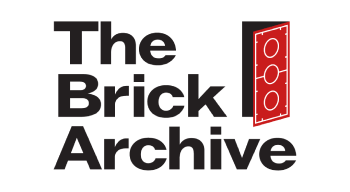I got this from a lot of three glued models I acquired yesterday… this Minitalia one seemed to be the least interesting (it’s one of the models on the back of the box of set number 4) and I was almost about to leave it there. But I thought to take it anyway.
Only later, at home, I realized it looked a little bit too shiny to be Minitalia. It did look like ABS, and I quickly realized that Minitalia in ABS basically means OLO. So I checked the few visible studs (the chimney was clearly re-added later, it’s not “original”) behind the broken balcony and… bingo! The “K” inside the studs! At that point I also realized another obvious thing… the bottom white bricks, all have the “pat. pend.” pattern (as opposed to the better known “pend. pat.”) discovered by Faust last year. The few red ones for which I can check the bottom are “pend. pat.”.
For those who take notice of these things, the visible 2×4 bricks are:
White: mold B, positions 1, 3, 4, 5, 6, 7, 8
Red: mold A, positions 1, 4, 7.
All the bricks (2×2, 2×4, arches) are OLO, while windows, the door and the roof slopes (only 2×3 which is weird) seem to be regular Minitalia parts. Judging from some color residue, it seems that originally the model also had shutters on the two front right windows (just like the model on the box of set #4).
So I guess it’s fair to assume that OLO Bricks were probably made in Denmark (Kolding, where Minitalia bricks seem to have been made?) too. Otherwise (Japan?) I can’t see how a glued model like this could have been found in Italy (the seller was a bit fuzzy about the origins of these sets, but apparently his father/uncle had a toy/stationery shop, so it makes sense that he could have glued models. Also the other models are from 241/242 Idea Books. I’ll post them later, this ugly duckling turned out to be far more interesting!)
PS: No, I’m not taking it apart to give the OLO Bricks away (I’m not even sure it’s possible! :D)
PPS: Thanks to Matteo for the tip!!


